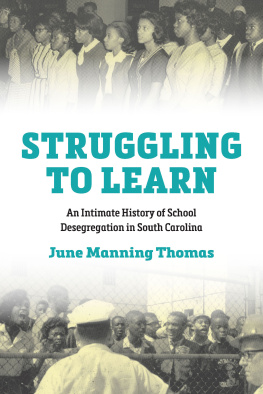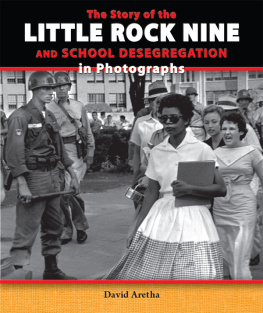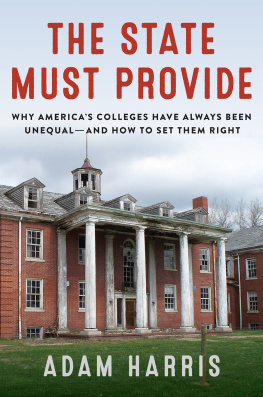June M Thomas - Struggling to Learn: An Intimate History of School Desegregation in South Carolina
Here you can read online June M Thomas - Struggling to Learn: An Intimate History of School Desegregation in South Carolina full text of the book (entire story) in english for free. Download pdf and epub, get meaning, cover and reviews about this ebook. year: 2022, publisher: University of South Carolina Press, genre: Politics. Description of the work, (preface) as well as reviews are available. Best literature library LitArk.com created for fans of good reading and offers a wide selection of genres:
Romance novel
Science fiction
Adventure
Detective
Science
History
Home and family
Prose
Art
Politics
Computer
Non-fiction
Religion
Business
Children
Humor
Choose a favorite category and find really read worthwhile books. Enjoy immersion in the world of imagination, feel the emotions of the characters or learn something new for yourself, make an fascinating discovery.
- Book:Struggling to Learn: An Intimate History of School Desegregation in South Carolina
- Author:
- Publisher:University of South Carolina Press
- Genre:
- Year:2022
- Rating:5 / 5
- Favourites:Add to favourites
- Your mark:
Struggling to Learn: An Intimate History of School Desegregation in South Carolina: summary, description and annotation
We offer to read an annotation, description, summary or preface (depends on what the author of the book "Struggling to Learn: An Intimate History of School Desegregation in South Carolina" wrote himself). If you haven't found the necessary information about the book — write in the comments, we will try to find it.
The battle for equality in education during the civil rights era came at a cost to Black Americans on the frontlines. In 1964 when fourteen-year-old June Manning Thomas walked into Orangeburg High School as one of thirteen Black students selected to integrate the all-White school, her classmates mocked, shunned, and yelled racial epithets at her. The trauma she experienced made her wonder if the slow-moving progress was worth the emotional sacrifice. In Struggling to Learn, Thomas, revisits her life growing up in the midst of the civil rights movement before, during, and after desegregation and offers an intimate look at what she and other members of her community endured as they worked to achieve equality for Black students in K-12 schools and higher education.
Through poignant personal narrative, supported by meticulous research, Thomas retraces the history of Black education in South Carolina from the post-Civil War era to the present. Focusing largely on events that took place in Orangeburg, South Carolina, during the 1950s and 1960s, Thomas reveals how local leaders, educators, parents, and the NAACP joined forces to improve the quality of education for Black children in the face of resistance from White South Carolinians. Thomass experiences and the efforts of local activists offer relevant insight because Orangeburg was home to two Black collegesSouth Carolina State University and Claflin Universitythat cultivated a community of highly educated and engaged Black citizens.
With help from the NAACP, residents filed several lawsuits to push for equality. In the notable Briggs v. Elliott, Black parents in neighboring Clarendon County sued the school board to challenge segregation after the county ignored their petitions requesting a school bus for their children. That court case became one of five that led to Brown v. Board of Education and the landmark 1954 decision that declared school segregation illegal. Despite the ruling, South Carolina officials did not integrate any public schools until 1963 and the majority of them refused to admit Black students until subsequent court cases, and ultimately the intervention of the federal government, forced all schools to start desegregating in the fall of 1970.
In Struggling to Learn, Thomas reflects on the educational gains made by Black South Carolinians during the Jim Crow and civil rights eras, how they were achieved, and why Black people persisted despite opposition and hostility from White citizens. In the final chapters, she explores the current state of education for Black children and young adults in South Carolina and assesses what has been improved and learned through this collective struggle.
June M Thomas: author's other books
Who wrote Struggling to Learn: An Intimate History of School Desegregation in South Carolina? Find out the surname, the name of the author of the book and a list of all author's works by series.







